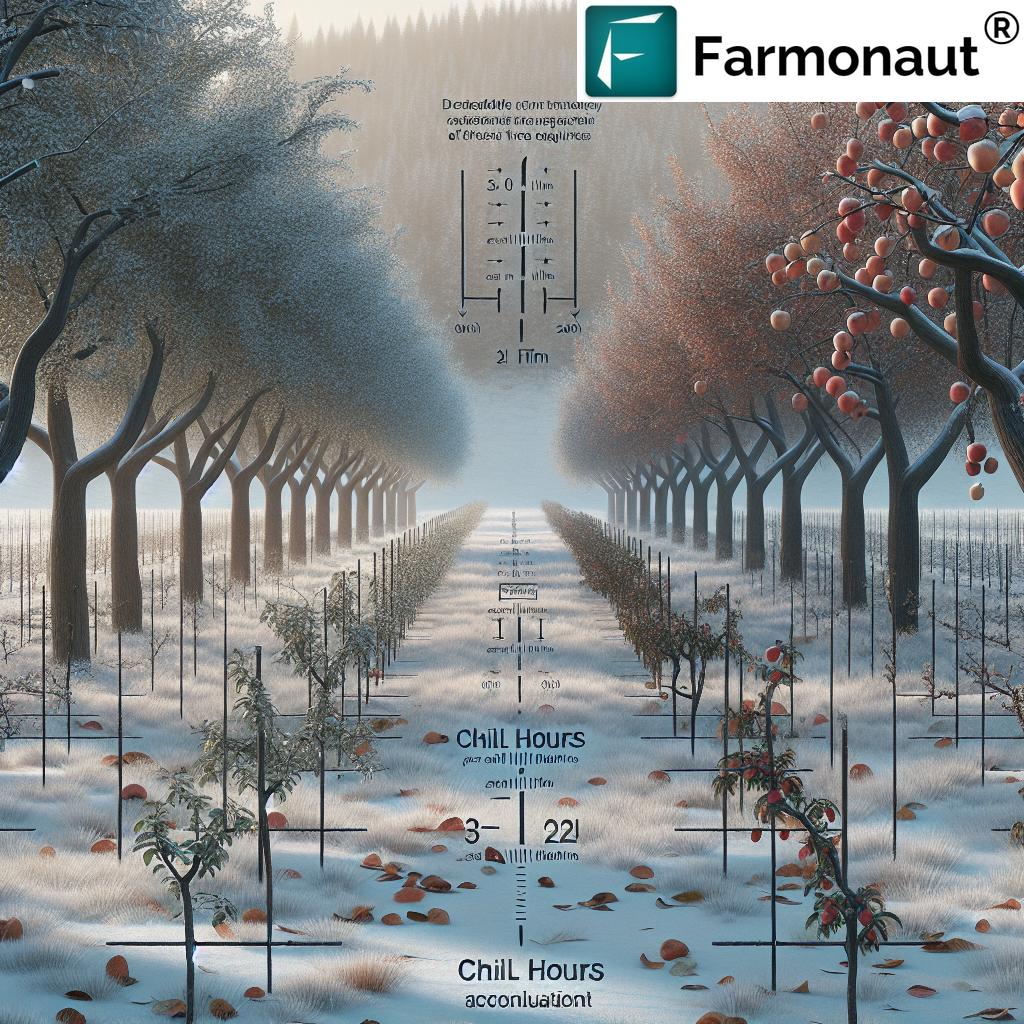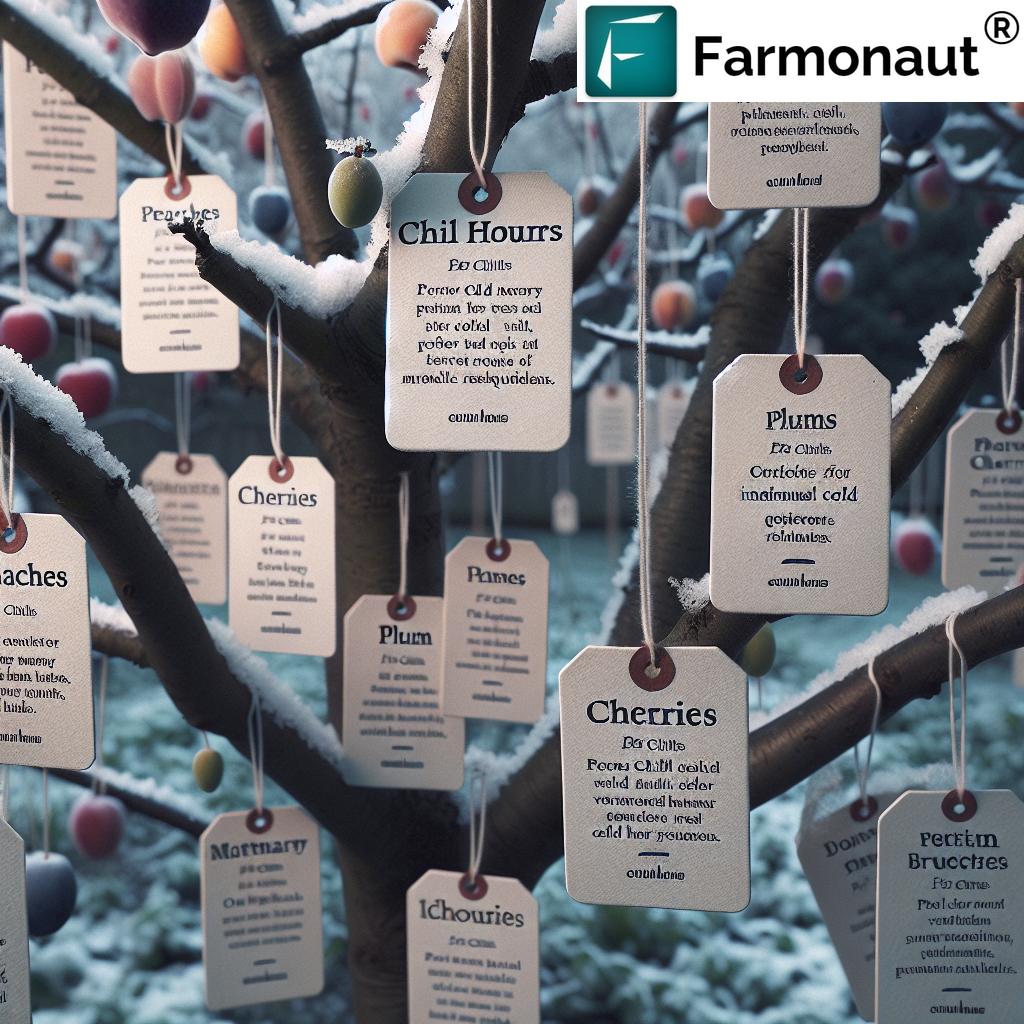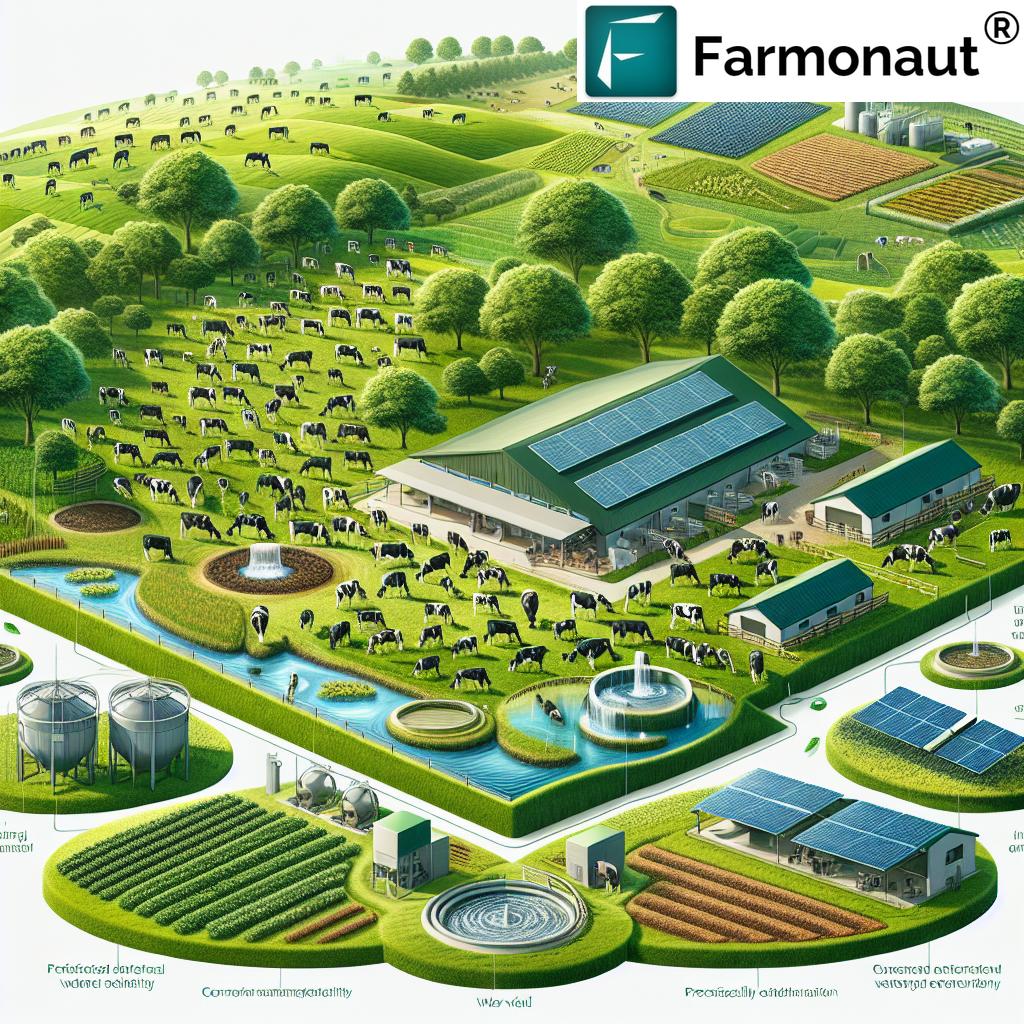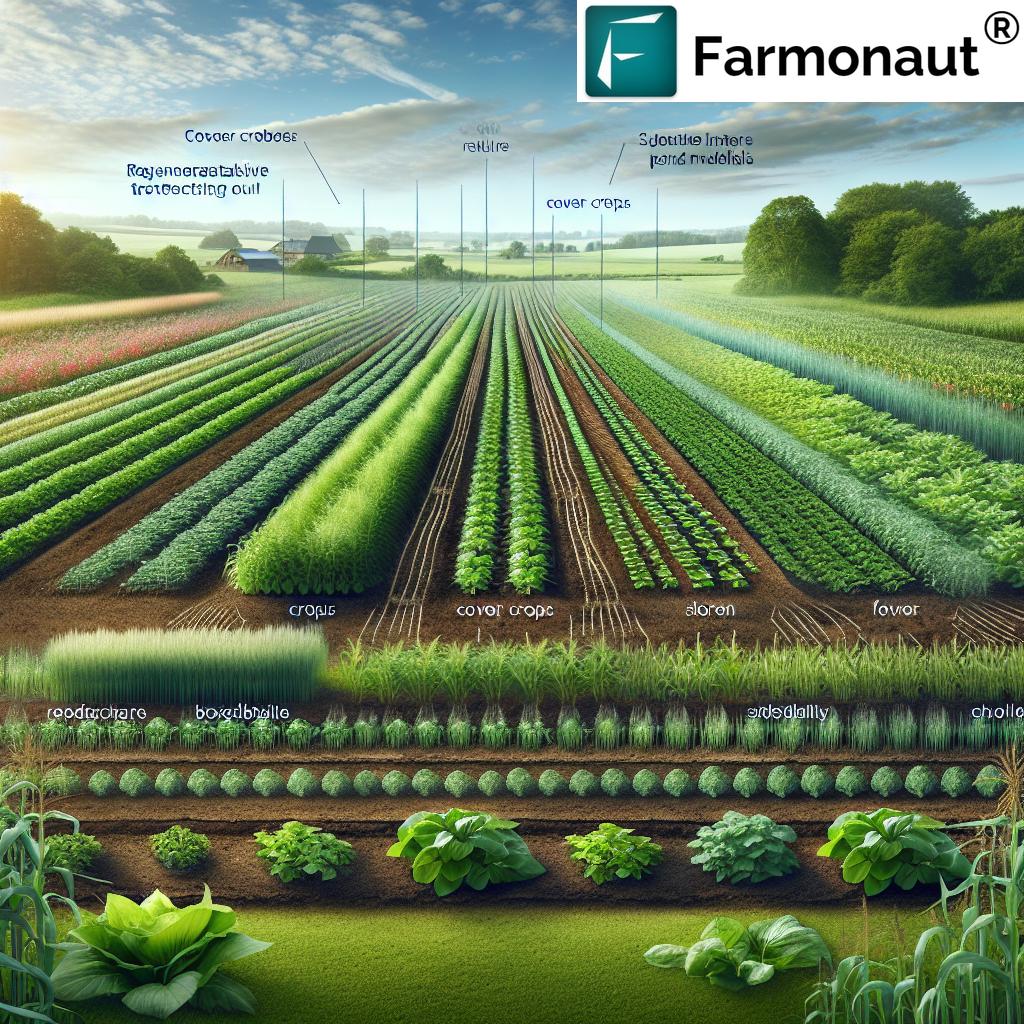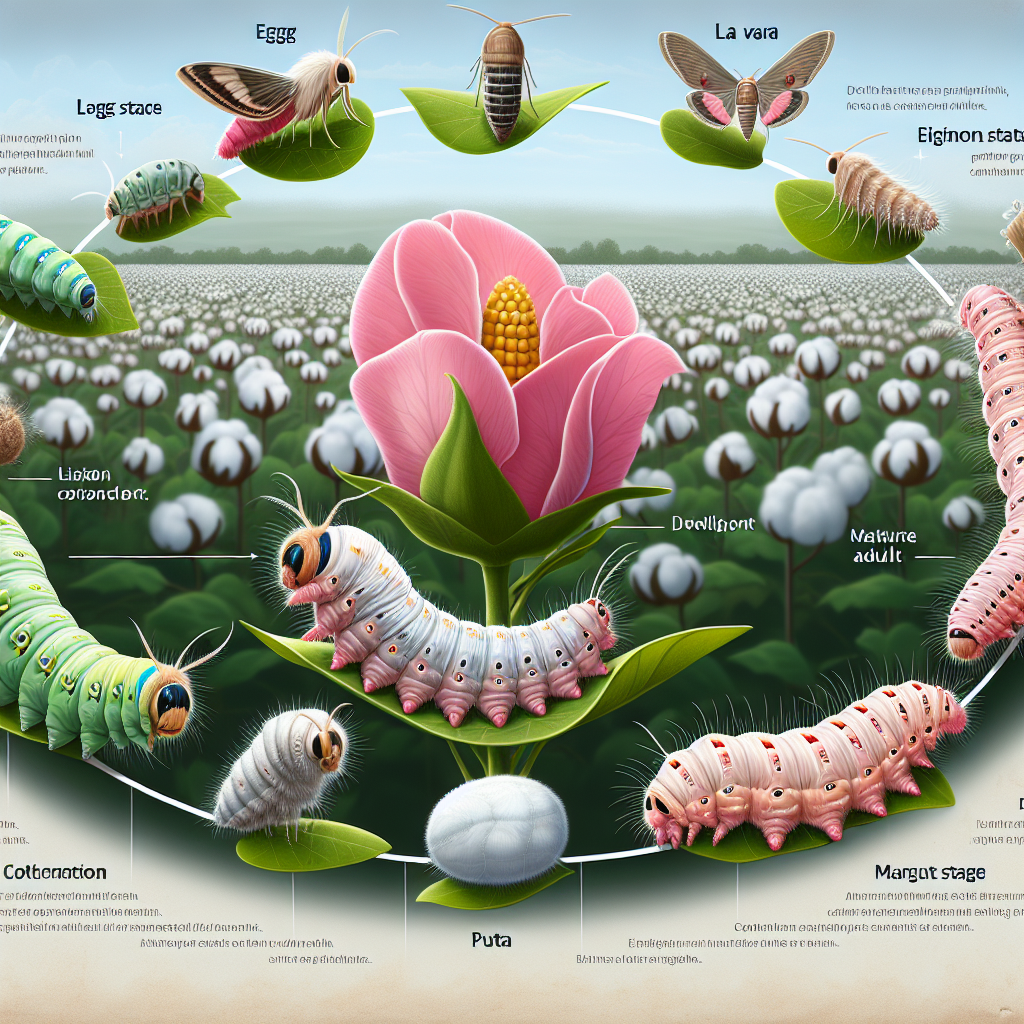What Are Chill Hours for Fruit Trees? 7 Key Tips for Maximizing Fruit Yields
“Some apple trees need 1,000+ chill hours, while low-chill varieties thrive with just 300 hours each winter.”
Understanding Chill Hours and Fruit Tree Dormancy
At the heart of successful fruit tree cultivation lies a crucial concept: chill hours. But what exactly are chill hours? This term refers to the cumulative number of hours during the winter months when temperatures fall between 32°F and 45°F (0°C to 7°C). For many deciduous fruit trees like apples, peaches, pears, plums, and cherries, this cold period is essential for ending dormancy and initiating flowering and fruiting in the spring.
As growers, understanding the impact of chill hours on fruit production is fundamental for choosing the right varieties and maximizing our harvest. Let’s explore how this critical factor drives successful yields—and what we must know to manage chill hours for fruit trees in different climates.
Why Are Chill Hours Essential for Fruit Trees?
Chill hours play a vital role in the dormancy and development cycles of most fruit tree species. During this winter period, trees enter a dormant phase—a deeply restful state in which growth halts and physiological changes occur. Fulfilling this chill hour need is essential for:
- Breaking bud dormancy and ensuring proper bud development in spring
- Allowing strong, synchronized flowering and fruit set
- Assuring high fruit quality, size, and yield
Insufficient chill hour accumulation can lead to several problems, such as delayed bud break, poor fruit set, and reduced yields. In severe cases, a lack of chill hours may even cause complete crop failure.
Chill Hours Requirement Table for Popular Fruit Trees
Selecting the best fruit tree varieties for your climate depends on their chill hour requirements. Refer to the table below to compare the essential chill hour needs, suitable zones, and special notes for common fruit trees and cultivars.
| Fruit Tree Type | Example Varieties | Estimated Chill Hours Required (hours) | Suitable USDA Hardiness Zones | Productivity / Special Notes |
|---|---|---|---|---|
| Apple | ‘Anna’, ‘Dorsett Golden’, ‘Fuji’, ‘Granny Smith’ | 300–1,000 | 4–9 | Low-chill types for warmer climates; high-chill for temperate regions. |
| Peach / Nectarine | ‘Desert Gold’, ‘Flordaprince’, ‘Redhaven’ | 250–1,000 | 5–9 | Low-chill cultivars ensure fruit set in milder winters. |
| Cherry (Sweet) | ‘Bing’, ‘Stella’, ‘Lapins’ | 800–1,200 | 5–8 | Require high chill hours for best results. |
| Cherry (Sour) | ‘Montmorency’, ‘Meteor’ | 350–800 | 4–8 | Can thrive in areas with lower chill accumulation. |
| Pear | ‘Hood’, ‘Baldwin’, ‘Bartlett’ | 300–1,500 | 4–9 | Wide range; select by local chill hours. |
| Plum (Japanese) | ‘Santa Rosa’, ‘Methley’ | 250–1,000 | 5–9 | Adaptable; choose cultivar by region. |
| Plum (European) | ‘Stanley’, ‘Green Gage’ | 700–1,200 | 5–8 | Best for cooler climates. |
| Apricot | ‘Katy’, ‘Gold Kist’ | 300–1,000 | 5–9 | Low-chill types for warmer regions. |
| Almond | ‘Nonpareil’, ‘All-In-One’ | 200–500 | 6–9 | Tolerates lower chill; suitable for warm winters. |
By using this table, we can select fruit tree varieties by climate and optimize our yields—a key strategy, especially as climate patterns shift.
Chill Hour Requirements & Fruit Tree Varieties by Climate
Each fruit tree cultivar has its unique dormancy and chill hour requirements. Understanding these needs and matching them with our local climate is crucial in managing chill hours for fruit trees to ensure robust development, flowering, and production.
1. Apples
- Chill hours required: Typically 500–1,000 for most apples.
Low-chill cultivars like ‘Anna’ and ‘Dorsett Golden’ require as little as 300–400 hours, ideal for warm climates.
For detailed growing tips, see this apple chill hour guide. - Optimal chill hours for apples: Align the variety to your region’s average chill hours for the best results.
2. Peaches & Nectarines
- Chill hours required: 400–1,000, depending on the variety. Some low-chill types thrive with 250–300 hours.
Examples: ‘Desert Gold’, ‘Flordaprince’. Well-suited for milder winters and southern regions. - Optimal chill hours for peaches: Select the right cultivar to avoid poor fruiting.
3. Cherries
- Sweet cherries: 800–1,200 hours (require cold winters).
- Sour cherries: 400–800 hours. More adaptable to areas with less chill.
4. Pears
- Chill hours required: 600–1,500 for traditional varieties, 300–600 for low-chill cultivars.
Recommendation: Always select cultivars based on the expected winter conditioning of your area.
5. Plums
- European plums: 700–1,200 hours; prefer cooler climates.
- Japanese plums: 250–1,000 hours; some low-chill types for subtropical regions.
6. Other Fruit Trees
- Apricots: 300–1,000 chill hours; select low-chill varieties for southern and coastal regions.
- Almonds: 200–500 chill hours; tolerant to lower chill conditions.
“Peach trees may fail to fruit if they receive less than 500 chill hours during dormancy.”
Assessing Chill Hour Accumulation by Region
To make informed decisions about fruit tree variety selection, we must first know the average chill hour accumulation in our specific region.
- How to determine local chill hours?
- Use online chill hour calculators or regional chill hour maps provided by agricultural extension offices, such as the University of California’s Chill Hours Tool
- Check with your local horticulture departments for guidance
- Carefully log winter temperature patterns on your farm over several growing seasons for better accuracy
- Matching Varieties: Once we have our average chill hour data, match it with the chill hour requirements in the table above to choose suitable fruit tree cultivars.
Understanding chill hour accumulation by region is key to fruit tree dormancy requirements, leading to robust growth and yield.
Impact of Insufficient Chill Hours and Solutions
Managing insufficient chill hours is one of the biggest challenges in deciduous fruit tree growing, especially as many regions witness warmer winters.
Common Problems Caused by Insufficient Chill
- Delayed bud break: Buds may open late, missing optimal conditions for fruit set.
- Reduced flowering: There may be few blossoms or uneven bloom, affecting pollination.
- Poor fruit set: Trees might fail to set fruit or yield is drastically reduced.
- Inferior fruit quality: Even produced fruit may be small, poorly colored, or have flavor issues.
- Complete crop failure: Chronic lack of chill can stop production altogether, creating economic risk.
Why Does This Happen?
Insufficient chilling hours interrupt the natural dormancy cycle. Buds cannot complete needed physiological changes, resulting in weakened or abnormal development. Warm winters or fluctuating temperatures often increase these risks.
Strategies for Managing Insufficient Chill Hours
- Selecting Low-Chill Fruit Tree Cultivars
Choose varieties bred for warmer climates—these require fewer chill hours and are genetically adapted to milder regions.
Find out more about low-chill cultivars at the UF Gardening Solutions Guide. - Microclimate Management
Utilize natural land features (like valleys or shaded slopes) which collect cool air and increase local chill hour accumulation. - Artificial Dormancy Breakers
Chemical rest-breaking agents (only with expert advice) may stimulate bud development. Use these strategies cautiously and per regulation. - Diversifying Tree Selection
Plant a mix of fruit trees with lower chill hour needs to ensure some harvest even in challenging winters.
Considering crop investments? Reduce risks from variable yields by using Farmonaut’s crop loan and insurance support tools. Our platform leverages satellite-driven crop monitoring, improving crop loan access and streamlining insurance verification.
7 Key Tips for Managing Chill Hours and Ensuring Successful Fruit Tree Yields
- Know Your Region’s Average Chill Hours
- Use reliable local climate data, extension resources, or Farmonaut’s satellite insights to log winter temperature patterns.
- Select Fruit Tree Varieties Specifically Bred for Your Climate
- Reference regional planting guides and the requirement table to choose low-chill fruit tree cultivars for warmer areas and high-chill types for temperate regions.
- Plant Multiple Species and Cultivars
- Diversify your orchard to safeguard harvest by including both low- and moderate-chill varieties.
- Maximize Microclimates for Extra Chill
- Site trees in spots with colder air flow, like north-facing slopes and natural windbreaks, for increased chill hour accumulation.
- Monitor Bud Development Closely
- Track the timing of bud swell, flowering, and fruit set. Use real-time crop health data to detect problems early (Farmonaut offers NDVI and crop health insights to help).
- Adjust Fertilizer and Watering Based on Bud Status
- If chill hours are low and bloom is late, delay fertilizing and watering until growth resumes.
- Stay Informed About Climate Shifts
- Be aware of climate change impact on winter chill hours in your area. Use digital solutions to keep ahead.
Scaling your orchard? Discover Farmonaut’s Agro Admin App for large-scale farm management. Plan, monitor, and optimize multiple fruit blocks efficiently—all from your browser or phone.
How Farmonaut Can Support Fruit Tree Growers
Modern precision agriculture can dramatically improve our ability to monitor chill hours and adapt to changing climates. Farmonaut offers remote-sensing, AI-driven advisory, and blockchain-based traceability—backed by real-time satellite imaging—to support fruit tree growers in every region.
- Satellite Crop Health Monitoring: Assess winter chill effects, soil moisture, and bud health using multispectral satellite images. Reduce input waste, optimize yields, and catch issues early.
- AI Advisory with Jeevn™: Get expert, weather-adapted advice for fertilization, pruning, irrigation, and regularly monitor orchard stress levels.
- Blockchain Traceability: Build consumer trust by tracking fruit origin and production across your supply chain, verified by satellite for authenticity.
- Resource & Fleet Management: Manage teams, optimize vehicle use, and monitor resource consumption with Fleet Management tools—improving the efficiency of orchard operations.
- Carbon Footprinting: Learn how to track, manage, and reduce carbon emissions from farming activities with carbon footprint tracking. Support sustainable fruit production!
All these solutions are available via Android, iOS, and Web Apps as well as through API integration. Start your free trial with Farmonaut today!
Frequently Asked Questions (FAQ) About Chill Hours for Fruit Trees
Q1: What are chill hours for fruit trees?
Chill hours refer to the cumulative time in winter (usually 32–45°F or 0–7°C) that fruit trees need for proper bud development, dormancy fulfillment, and a successful crop.
Q2: Why are chill hours important in fruit tree cultivation?
Without meeting chill hour requirements, trees may have delayed bud break, poor flowering, reduced fruit set, and overall lower yields.
Q3: How can I find out the average chill hours in my region?
Use local agricultural extension services, university chill hour calculators, or your own winter temperature records.
Q4: What to do if my orchard gets insufficient winter chill?
Select low-chill fruit tree cultivars, use microclimate management, diversify plantings, and monitor trees closely for abnormal growth or bloom.
Q5: Can I grow apples, peaches, or cherries in warm climates?
Yes, but choose low chill fruit tree cultivars (such as ‘Anna’ apple, ‘Desert Gold’ peach, or ‘Flordaprince’ peach) for best success.
Q6: Where do I get real-time insights on orchard health?
Use Farmonaut’s satellite and AI-based advisory platform—it delivers crop health data, weather forecasts, and orchard management best practices in real time.
Wrap-Up: Takeaways for Successful Fruit Tree Cultivation
The pathway to a fruitful orchard starts with understanding chill hours for fruit trees. By assessing local chill hour accumulation, selecting appropriate fruit tree cultivars, and adapting our cultivation techniques, we can minimize the impact of insufficient chill hours and position ourselves for successful, bountiful yields.
- Chill hours are essential for healthy dormancy, bud, and fruit development
- Select fruit tree varieties by chill hour requirements and match them to your region’s climate
- Diversify your orchard for resilience
- Use satellite technology and data-driven tools to monitor, adapt, and improve crop success
- Stay up-to-date with best practices using expert agri-advisory apps and digital resources
Let’s harness the power of science, technology, and thoughtful management to achieve higher yields and fruitful harvests, regardless of regional chill limitations. Get started with Farmonaut for comprehensive orchard management and unlock your trees’ full potential!
Optimize your orchard with precise chill hours insight and the latest in digital agriculture—only with Farmonaut, your global partner in sustainable fruit tree cultivation.


